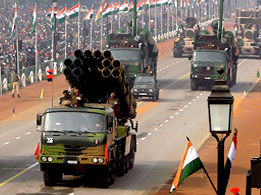Self-indigenization in Aerospace and Defence
It is a great shock and sad on part of India, that a wide range of nuts, bolts, screws for aerospace and defence sector are imported from abroad even today. India’s defence procurement cost is rising every year. More and more defence import throwing country in permanent dependency to meet the demands. DRDO-the apex body said to have the key defence technologies falls short in indigenization. The Tejas light combat aircraft which was developed from the last 32 years is yet to be inducted in Indian Air Force. Its engine and flight control system is developed by American company. The Arjun Tank conceived 41 years back is powered by German engine. And the list of such examples is endless.
The silver lining is that in 2013 the Aerospace and Defence (A&D) generated business worth $3.5 billion with Small and medium sector enterprises (SME’s) contribution to the sector. Also it is true to say that Indian SME’s is now maturing, fulfilling the global aerospace standards and getting exposure to global markets.
Participation in supply chain
SME’s in A&D are capable of several line activities including precision plastic moulding, CNC machining, design of mechatronics, CNC sheet metal fabrication and forming, design of moulds, hydraulic valves and actuators, software development, etc. Most importantly the capabilities in specialized advanced skills possessed by SME’s integrate them in the supply chain. Some of them also gaining recognition and are working with global A&D companies e.g. the Indian automotive sector. The global companies are now looking towards Indian SME’s as outsourcing with an advantage of lower costs.
One of the SME designed and developed the weapon control equipment for the Jaguar Fighters of the IAF. Some other involved in indigenously developed flight data recorder for Fighter aircraft and multi function display are some of the success story of the Indian SME’s in A&D, developing indigenously which otherwise would have been imported. In spite of these achievements, SME’s contribute 20% of the indigenous content in our defence equipment. This under-utilisation speaks of gross ignorance and challenges the sector faces making the contribution meager.
Challenges and way forward
The sector lacks the domain expertise required for complete design and manufacture. Thus the need is to move to multi-dimensional expertise across the entire spectrum. To develop the specialization in machining and fabricated parts to create the holistic A&D cluster encompassing all domains, across the aerospace manufacturing.
The other aspect of the sector is need of government support to the sector in terms of priority lending to mitigate the risks associated with engineering, design and R&D efforts. The aerospace sector demands sophisticated research and hence the large expenses which is often not met due to small size of SME’s. Also a greater integration with domestic R&D units in the sector would provide a greater space to SME’s and in turn would strengthen the capabilities of A&D in SME’s.
‘India opportunities venture fund’ worth R 5000 crore is created through Small Industries Development Bank of India (SIDBI) and two SME exchanges to facilitate easier capital access are the steps in right direction. It would push the Make-In-India campaign and create a globally competitive A&D sector lowering the dependency.
Overall the Indian SME’s are spotted in the global market because of their integration in the global chain, it is now time to improve their capabilities by higher level of value addition to penetrate deeper into the global market.


